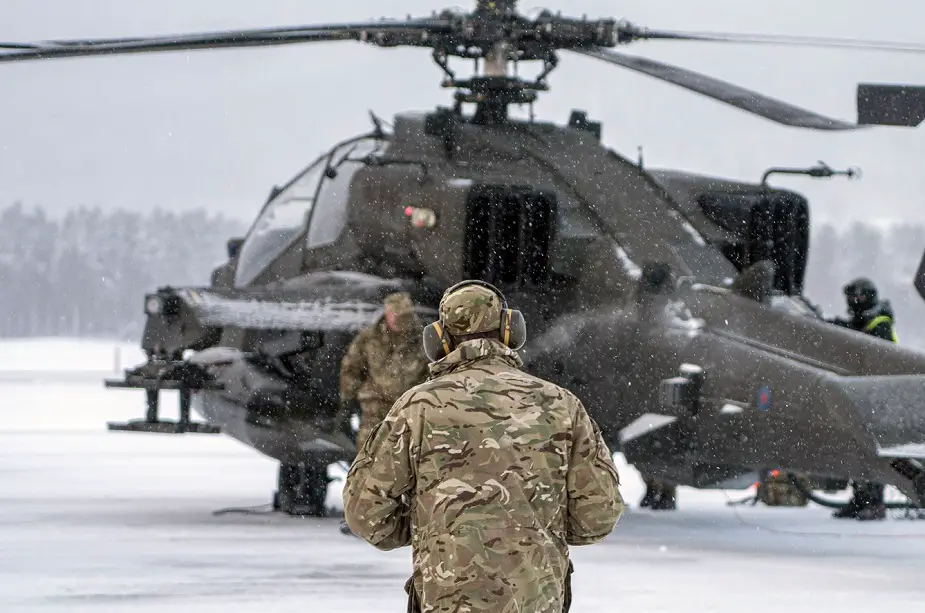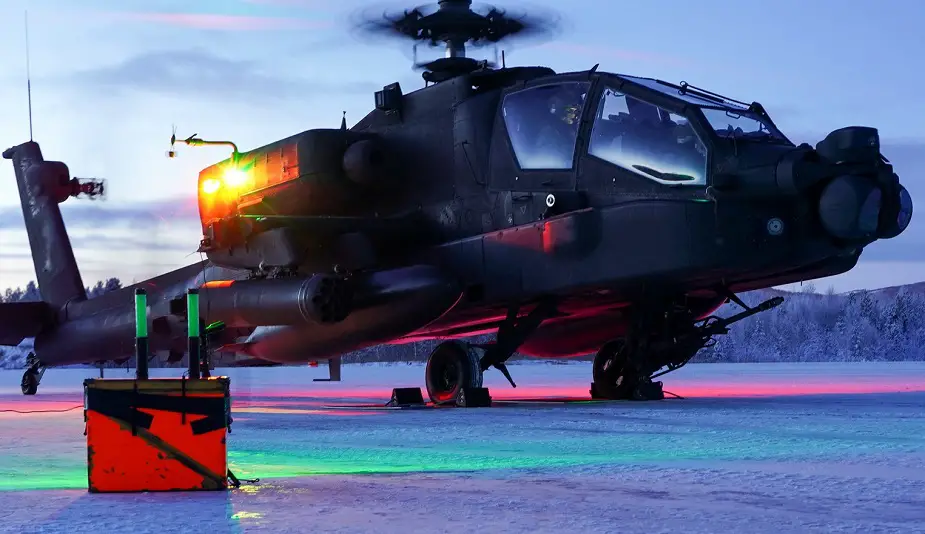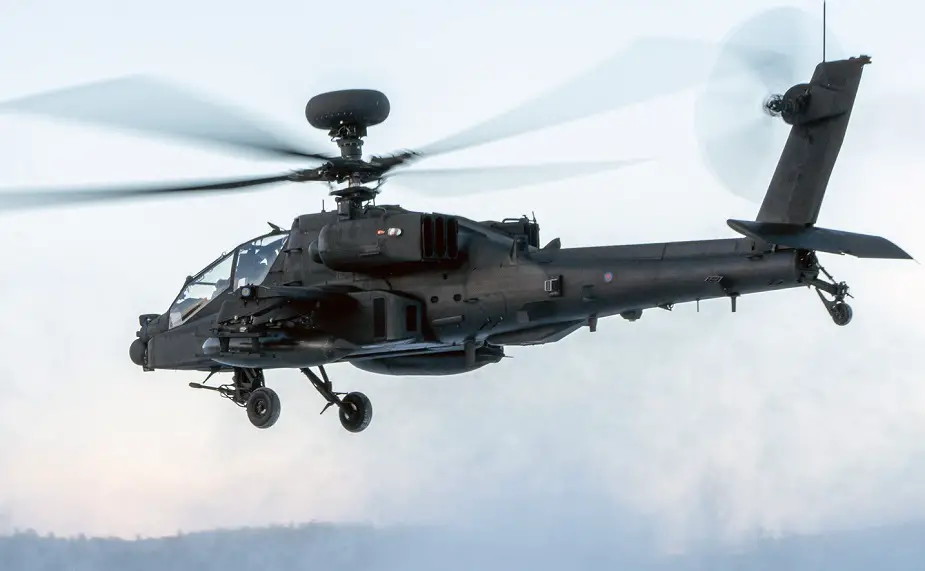In recent weeks, Apache Attack Helicopter pilots and crew have been training in challenging arctic conditions on Exercise Clockwork, to ensure their readiness for operations.
Follow Air Recognition on Google News at this link
 The cold weather aviation operators’ course last 10 days and is part of the bigger Exercise Clockwork, an annual event in the High North or Arctic, which has been running for 52 years – and gives Army helicopter pilots the chance to master the challenging snowy conditions (Picture source: British Army)
The cold weather aviation operators’ course last 10 days and is part of the bigger Exercise Clockwork, an annual event in the High North or Arctic, which has been running for 52 years – and gives Army helicopter pilots the chance to master the challenging snowy conditions (Picture source: British Army)
On March 22, the Secretary of State for Defence, Ben Wallace, publicly announced an exciting future for the Army’s helicopter force - the new 1st Aviation Brigade.
As part of the British Army’s transformation initiative, ‘Future Soldier’, it will be teamed with 16 Air Assault Brigade to form a new Global Response Force, always ready to respond quickly to crisis across the world.
Helicopters from the Brigade are also always on stand-by in the UK. As well as this helicopter crew routinely train overseas, ensuring that their skills are honed to all conditions, working alongside the UK’s allies, and helping to deter aggression from adversaries.
In recent weeks, Apache Attack Helicopter pilots and crew have been training in challenging arctic conditions to ensure their readiness for operations.
The cold weather aviation operators’ course last 10 days and is part of the bigger Exercise Clockwork, an annual event in the High North or Arctic, which has been running for 52 years – and gives Army helicopter pilots the chance to master the challenging snowy conditions.
Working with allies and partner nations is critical in order to reinforce relationships and share skills and ensure co-ordination. The Norwegians provided the Joint Air Attack Team – the ground controllers who talk the Apaches onto target.
It was a scaled-back event this year, due to COVID, but pilots were able to train in the extreme winter conditions to ensure they’re fully-trained and ready for deployment at a moment’s notice.
 During the Arctic winter the daylight is limited, so much of the training takes place in twilight or darkness – making it one of the harshest environments to operate in in the world (Picture source: British Army)
During the Arctic winter the daylight is limited, so much of the training takes place in twilight or darkness – making it one of the harshest environments to operate in in the world (Picture source: British Army)
The training area is almost 200 miles within the Arctic circle. During the Arctic winter the daylight is limited, so much of the training takes place in twilight or darkness – making it one of the harshest environments to operate in in the world.
Ice-breaking drills, flying in snow, landing in low visibility, live firing, and air crew survival skills all featured in the programme. Temperatures fell to about -23, adding to the challenge.
Apache helicopter pilots are part of a highly-trained, dedicated team with a remit for work in the high North – such as the Baltic states or Scandinavia.
Soldiers from 656 Squadron, 4 Regiment Army Air Corps (4AAC), regularly support the Royal Marines on exercises or operations abroad; an example of how the Army is integrated with its sister Services, as well as with international partners.
4AAC is the British Army’s Very High Readiness Attack Aviation unit. It is on standby 365 days a year in support of worldwide taskings with the Apache in both the land and maritime roles.

Ice-breaking drills, flying in snow, landing in low visibility, live firing, and air crew survival skills all featured in the programme. Temperatures fell to about -23, adding to the challenge (Picture source: UK Army)
















